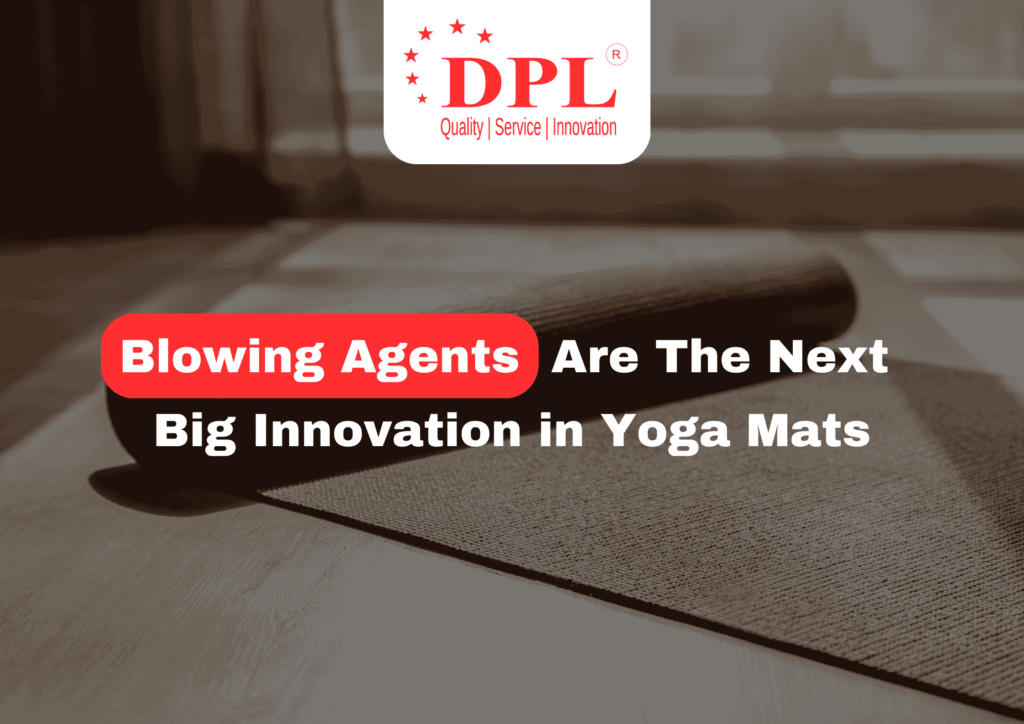
In recent years, the Indian manufacturing sector has seen a strong push towards material innovation and environmental responsibility. Among the many developments making waves in this space, blowing agents have emerged as one of the most promising innovations, especially within polymer-based product categories. With the ever-evolving consumer preferences for lighter, more durable, and eco-friendly products, blowing agents are setting the stage for transformative changes in how materials are engineered across various product segments.
Understanding Blowing Agents
Blowing agents are chemical substances that produce a cellular structure through a foaming process in a variety of materials, especially plastics and elastomers. The process typically involves the generation of gas within the polymer matrix, which creates internal voids, reducing density and improving several material properties.
These agents can be classified into two main types:
● Physical Blowing Agents: These are volatile liquids or compressed gases that evaporate or expand under specific conditions of heat and pressure. Common examples include hydrocarbons and carbon dioxide.
● Chemical Blowing Agents: These compounds decompose at a certain temperature, releasing gases such as nitrogen, CO₂, or ammonia. Examples include azodicarbonamide, sodium bicarbonate, and hydrazine derivatives.
The choice of blowing agent depends on multiple factors, such as desired density, thermal conductivity, structural integrity, and processing conditions.
Key Advantages of Blowing Agents in Polymer Manufacturing
India’s polymer industry is evolving quickly, and blowing agents offer several advantages that align with modern manufacturing and sustainability goals:
1. Reduced Material Consumption
By introducing a foamed cellular structure, blowing agents help manufacturers use less raw material without compromising on performance. This reduction in density translates to significant cost savings and efficiency.
2. Enhanced Thermal and Acoustic Properties
Foamed polymers exhibit better thermal insulation and sound-dampening qualities. This makes them ideal for products that require specific functional characteristics, giving manufacturers greater flexibility in meeting technical specifications.
3. Improved Processability
The use of blowing agents often leads to better control over the polymer’s rheology and molding behaviour. This results in smoother processing, faster production cycles, and improved surface finishes.
4. Sustainability and Lightweighting
Lightweight products not only reduce transportation costs but also have a smaller carbon footprint. Blowing agents allow for the development of materials that are more sustainable, both economically and environmentally.
Why India’s Manufacturing Sector Is Embracing This Innovation
India’s manufacturing ecosystem is moving towards value addition and circular economy practices. Here’s why blowing agents are becoming a focal point:
● Growing demand for resource-efficient manufacturing
● Rising cost of raw materials
● Need for differentiation through material innovation
● Regulatory push for sustainable alternatives and green chemistry
In particular, Indian polymer processors are increasingly looking for solutions that can meet global export standards while staying cost-effective domestically. Blowing agents serve as an enabler of such balanced outcomes.
Innovations in Blowing Agent Technology
The innovation in blowing agents has come a long way from traditional chlorofluorocarbons (CFCs) and hydrofluorocarbons (HFCs) to more eco-conscious solutions. Current advancements include:
1. Environmentally Friendly Blowing Agents
Manufacturers are now adopting blowing agents with zero ozone-depleting potential and low global warming potential. This is critical as India becomes more aligned with international environmental commitments like the Kigali Amendment and Paris Agreement.
2. Exothermic and Endothermic Chemical Blowing Agents
Exothermic agents release heat upon decomposition, accelerating the foaming process. Endothermic agents absorb heat, offering better control over the foaming process. Both types have seen refinements to suit varied industrial needs.
3. Nano-blowing Agents
Cutting-edge R&D has introduced nanotechnology into the field, allowing for even better control over cell size and distribution within the foam structure. This results in materials that are more uniform, with superior strength-to-weight ratios.
4. Hybrid Blowing Systems
Hybrid blowing agent systems combine both physical and chemical mechanisms to leverage the best of both worlds. These are being explored to optimise cost, performance, and regulatory compliance simultaneously.
Role of Manufacturers Like DPL Group of Companies
At DPL Group of Companies, innovation and sustainability go hand in hand. Our commitment to developing and supplying advanced material solutions is firmly rooted in the belief that the future of Indian manufacturing lies in efficient, smart, and sustainable practices. As the demand for lighter, safer, and more cost-effective materials continues to grow, we are actively investing in the R&D of high-performance blowing agents and advanced polymer formulations.
By working closely with clients, raw material producers, and technology partners, we aim to drive the next phase of industrial transformation, anchored in material excellence and environmental consciousness.
Conclusion
Blowing agents are not just a minor tweak in the polymer processing cycle; they represent a significant leap toward advanced material design. For India’s manufacturing sector, which is rapidly evolving and aspiring to match global benchmarks, blowing agents offer a rare combination of performance, efficiency, and sustainability.
As more Indian manufacturers look to future-proof their production processes, blowing agents will play a central role in material innovation. The DPL Group of Companies believes that those who invest in this frontier now will lead the markets of tomorrow.
